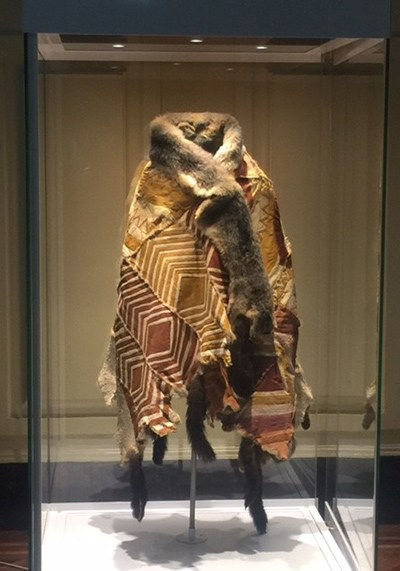Superheroes weren’t the first to wear cloaks. How Aboriginal and Torres Strait Islanders didn’t need
- Dion Devow & Sally Cooper
- Sep 24, 2017
- 2 min read
We have all seen images of the proud and strong aboriginal man standing on one leg and spear poised. At school, we were taught that Aboriginal peoples got around in loin cloth and lap laps but really? Australia though known to be hot and arid also gets bloody cold and as one of the most innovative and adaptive societies in the world, Indigenous people definitely knew a thing or two about creating items for warmth from the animals that were abundant in their areas.
We all love a good cloak from Superman, Wonder Women, French Fashions Houses and Sherlock homes have all worn or designed them. For Indigenous Australians, the cloak was a mainstay in most tribes but definitely in communities where the weather is colder. Aboriginal communities in Tasmania, Victoria and the southern areas of Queensland and South Australia could all be found to be sporting a cloak made from animal skins. These cloaks covered people’s bodies from the neck down to their feet.
Noongar peoples of WA preferred Kangaroo and Wallaby as there pelt of choice for their cloaks (named a Booka, Buka, Boka) whilst Koori people’s preference was the possum.
Being at one with the land, Indigenous people’s preferences for clothing was shaped by the availability and overabundance of a particular animal in their area. Cloaks were also made from animals such as sugar glider, emu and Quoll.
The process of making this leather outfit was intensive and required extensive skills from both men and women in the tribe. From first hunting the animal to skinning and scraping remaining flesh from the pelt before allowing it to dry. The pelt was then pinned and stretched on trees using echidna quills.
Once dried the skins were not tanned like with today’s leather manufacturing but decorated with art to make the coat look “On Point”. Designs were made by etching designs into the leather using oyster or mussel’s shells or stone tools. Once this was done the cloaks would be painted using ochre or pigment colours from the local area.
Once the designs were completed the pelts were sewn together using thread from either the sinew from the animal or from local plants.
The designs used on the cloaks included a range of designs from a person’s identity within the tribe, totems and the representation of the country on which they lived.
Téa&Belle latest collection is taking inspiration from their forefathers and creating a series of products that use Kangaroo leather. Belts, wallets and travel bags will all be made with Kangaroo leather in the Téa&Belle Collection.
By using an animal that is in overabundance in Australia we are using the same land management practices as the first peoples of Australia.
Téa&Belle’s only superpower is to be respectful of the past whilst looking forward at what our tribes need in their lives today.
References:
1906 ‘HISTORY OF BENALLA.’, Benalla Standard (Vic. : 1901 – 1925), 9 October, p. 3. , viewed 12 Apr 2016, http://nla.gov.au/nla.news-article155417125
2013 ‘Ancient Traditions, New Stories: Reviving the Aboriginal Possum Skin Cloak’, Smithsonian Mag, viewed 12 Apr 2016, http://www.smithsonianmag.com/smithsonian-institution/ancient-traditions-new-stories-reviving-the-aboriginal-possum-skin-cloak-7192/
2012 ‘Possum Skin Cloak’, Australian Dress Register, viewed 12 Apr 2016, http://www.australiandressregister.org/garment/274/
1967 ‘Les Aborigènes Australiens.’ A. P. Elkin, (Gallimard 1967)









































Comments